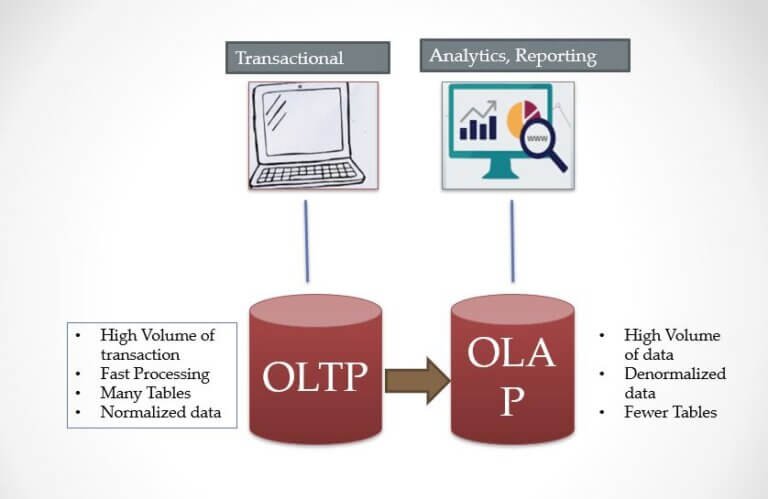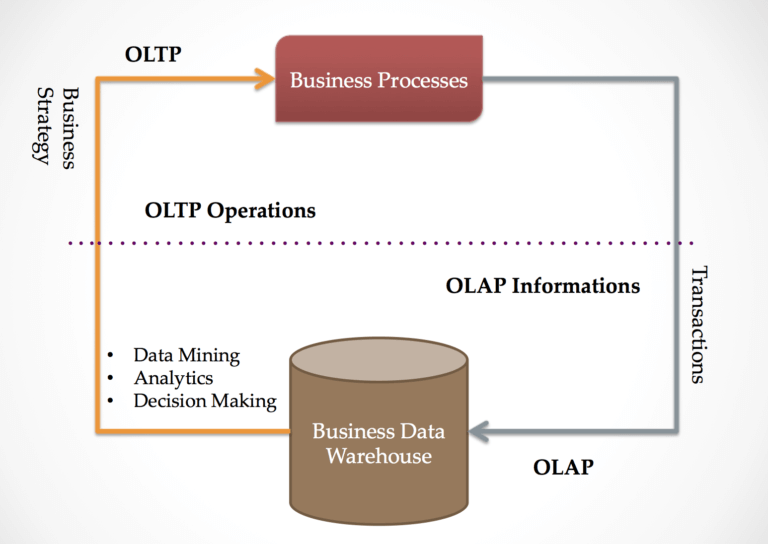ETL Testing
What is ETL?
Types of ETL Testing
ETL tools
ETL Testing tools
Why ETL Testing ?
ETL Testing Process
Responsibilities of an ETL Tester
ETL Testing Challenges
Data Ware Housing
Data Modelling
Data Mining
OLTP Vs OLAP
Test Scenarios for ETL Testing
ETL Testing Bugs
SQL Queries Used in ETL Testing
DataBase Testing Vs ETL Testing
Types of ETL Testing
ETL tools
ETL Testing tools
Why ETL Testing ?
ETL Testing Process
Responsibilities of an ETL Tester
ETL Testing Challenges
Data Ware Housing
Data Modelling
Data Mining
OLTP Vs OLAP
Test Scenarios for ETL Testing
ETL Testing Bugs
SQL Queries Used in ETL Testing
DataBase Testing Vs ETL Testing
OLTP and OLAP | Difference Between OLTP and OLAP
This article will present you with a complete idea about What are OLTP and OLAP & Difference between OLTP and OLAP.
OLTP and OLAP
- OLTP and OLAP are used in business applications .Both are the online processing systems. OLTP is a transactional processing while OLAP is an analytical processing system.
- OLTP (Online Transaction Processing) and OLAP (Online Analytical Processing) are two different types of database systems used in ETL processes. OLTP and OLAP are designed to handle different types of data and support different types of queries.
- OLTP captures, stores, and processes data from transactions in real time.
- OLTP databases are used to manage day-to-day transactions. They are highly normalized and optimized for read and write operations. OLTP databases are designed to support fast and accurate processing of individual transactions, such as updating customer records, processing orders, or managing inventory. OLTP databases store detailed data and are optimized for low-latency transaction processing.
- OLAP uses complex queries to analyze aggregated historical data from OLTP systems.
- OLAP databases are used for reporting and analysis. They are highly denormalized and optimized for read-only operations. OLAP databases are designed to support complex queries and aggregations, such as analyzing sales trends, customer behavior, or product performance. OLAP databases store summarized data and are optimized for high-latency reporting and analysis.

OLTP (Online Transactional Processing):
-
- OLTP is used in Traditional databases.
- OLTP is characterised by a large number of short on-line transactions, Includes insertions, updates, and deletions .
- OLTP system captures and maintains transaction data in a database. For example Banking transactions , super market cash system, on line shopping etc.
- Most business applications are OLTP systems
- This type of transaction ensures that operations performed by different users do not interfere with each other.
- OLTP stores the records of the last few days or a week to successfully perform the transactions hence it maintains historical data as well.
- OLTP ensures the availability in the cart and concurrency in case a large number of users are accessing the same website at the same time.
OLAP (On Line Analytical Processing):
-
- OLAP applies complex queries to large amounts of historical data, aggregated from OLTP databases and other sources, for data mining, analytics, and business intelligence projects.
- This systems work with very large amounts of data.
- These systems have a smaller group of users than OLTP systems
- OLAP applications are widely used by Data Mining techniques.
- OLAP is characterised by relatively low volume of transactions.
- OLAP queries consumes lot of resources.
- OLAP integrates data from different processes for eg combine sales , inventory and purchasing data.

Difference between OLTP and OLAP
On Line Transaction Processing (OLTP) |
On Line Analytical Processing (OLAP) |
| OLTP systems handle transactional data, | OLAP systems handle aggregated historical data. |
| Uses data warehouse as it can access multidimensional data. | Uses traditional 3NF database. |
| OLTP systems are small in size (up to 10 GB), | OLAP systems can be massive, running into several petabytes of data. |
| OLTP systems deal with simple queries | OLAP systems deal with complex data analysis algorithms. |
| OLTP systems deal with read as well as write operations, | OLAP systems handle only read operations. |
| Response time is almost a minute | Response time in milliseconds |
| Allows hundreds of users | Allows almost thousands of users |
| It is Customer oriented | It is Market Oriented |
| Back-up is required only time-to-time | Backups are regular as well as incremental |
ETL Testing
What is ETL?
Types of ETL Testing
ETL tools
ETL Testing tools
Why ETL Testing ?
ETL Testing Process
Responsibilities of an ETL Tester
ETL Testing Challenges
Data Ware Housing
Data Modelling
Data Mining
OLTP Vs OLAP
Test Scenarios for ETL Testing
ETL Testing Bugs
SQL Queries Used in ETL Testing
DataBase Testing Vs ETL Testing
Types of ETL Testing
ETL tools
ETL Testing tools
Why ETL Testing ?
ETL Testing Process
Responsibilities of an ETL Tester
ETL Testing Challenges
Data Ware Housing
Data Modelling
Data Mining
OLTP Vs OLAP
Test Scenarios for ETL Testing
ETL Testing Bugs
SQL Queries Used in ETL Testing
DataBase Testing Vs ETL Testing
